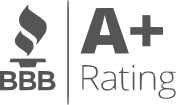Building a solid credit history is vital for nonprofit organizations. Establishing and maintaining good credit demonstrates financial responsibility and helps secure future funding options when needed. Some foundations issuing grants might also view a nonprofit’s credit history to ensure that the organization is financially stable. 
Nonprofits, businesses and even individuals improve their credit scores by managing debt strategically, paying on time, and diversifying debt sources If you can do this then your nonprofit can build a strong credit history and position itself for better credit terms leading to long-term success.
Some nonprofits will open up a line of credit to improve their credit report. A nonprofit line of credit not only supports daily cash flow but also strengthens your organization’s credit profile—helping prove reliability to lenders, vendors, and donors alike.
Summary
Why Building Credit History Is Essential for Nonprofits
The top three funding sources for nonprofits include fundraising, grants, and nonprofit-specific loans such as lines of credit. To maintain 501(c)(3) tax-exempt status, nonprofits must receive at least one-third of their revenue from public support, often through donations or fundraising efforts tied to their mission. However, grants and donations aren’t always consistent—and when cash flow slows, access to credit becomes a vital safety net.
Establishing credit enables nonprofits to qualify for larger funding opportunities in the future. Lenders are more willing to extend loans or lines of credit to organizations that demonstrate a strong repayment history, low balances, and responsible debt management.
Because nonprofits typically lack personal guarantees or collateral, many traditional banks consider them higher-risk borrowers. That’s why building organizational credit early—before it’s urgently needed—is one of the smartest financial moves a nonprofit can make.
Understanding the Three Types of Credit That Impact Nonprofits
Nonprofits can build a credit history using three main types of credit:
Service Credit: Monthly utility payments—like electricity, internet, and phone bills—impact your credit, especially if payments are late.
Installment Credit: Long-term loans (such as equipment financing or mortgages) that are repaid in fixed amounts each month.
Revolving Credit: Credit cards and lines of credit that allow flexible borrowing and repayment as needed.
Each credit type contributes to your nonprofit’s overall credit profile, helping establish reliability over time.
Step 1: Register for a D-U-N-S Number
The first step toward building nonprofit credit is obtaining a D-U-N-S Number through Dun & Bradstreet. This unique identifier establishes your organization’s credit file and allows potential partners, lenders, and grant-makers to assess your creditworthiness.
Note: Since April 2022, federal agencies now use a Unique Entity ID (UEI) through SAM.gov instead of the D-U-N-S system. Nonprofits seeking government grants should ensure both identifiers are properly registered.
Step 2: Secure a Business Credit Card
A business credit card is one of the easiest ways for nonprofits to begin building credit. Many financial institutions offer credit cards specifically for nonprofits, often with low interest rates and no annual fees. Always ensure the issuer reports payment history to major business credit bureaus such as Dun & Bradstreet, Experian, and Equifax.
Consistent on-time payments and low credit utilization build credibility and raise your organization’s credit score. If your nonprofit’s activity isn’t being reported, reach out to the Credit Builders Alliance (CBA)—a nonprofit that helps organizations report credit activity and improve their scores.
Step 3: Apply for a Nonprofit Line of Credit
A nonprofit line of credit is one of the most powerful tools for establishing and improving credit history. It’s a revolving funding source that allows your nonprofit to borrow when needed, repay, and borrow again—ideal for managing fluctuating cash flow or covering short-term expenses.
Unlike a traditional bank loan, a line of credit only accrues fees on the funds you actually use. This makes it a cost-effective financial backup that strengthens credit while keeping operating costs predictable.
How Financing Solutions Helps Nonprofits Build Credit
Since 2012, Financing Solutions has been the largest provider of nonprofit lines of credit in the United States, serving thousands of small and mid-sized organizations. Their nonprofit line of credit requires no collateral, no personal guarantees, and no setup or maintenance costs—a unique advantage in nonprofit financing.
Benefits include:
Quick, 2-minute online application
Same-day approval with no obligation
Funds wired to your bank within minutes
Low cost when used; no cost until used
Simple yearly renewal
Secure 24/7 online account access
Even if your nonprofit has little or no credit history, Financing Solutions helps organizations begin building it responsibly—providing access to reliable cash flow support whenever needed.
Long-Term Credit-Building Tips for Nonprofits
Beyond loans and credit cards, nonprofits can build stronger credit by:
Paying all vendors and service providers on time or early.
Keeping debt-to-income ratios low.
Regularly reviewing credit reports for errors.
Maintaining consistent financial documentation.
Developing a strong credit foundation takes time, but once established, it opens the door to larger funding opportunities, better loan terms, and increased credibility with donors and partners.




